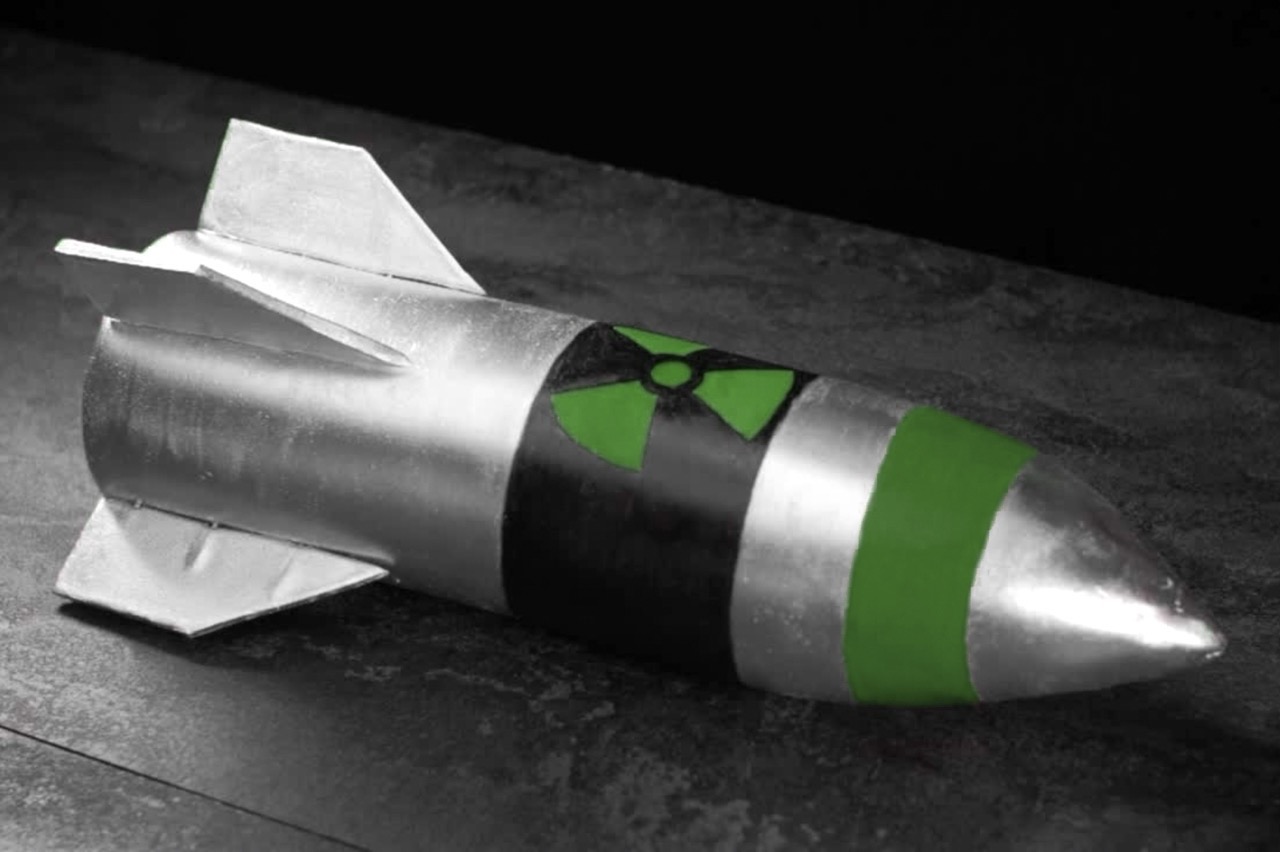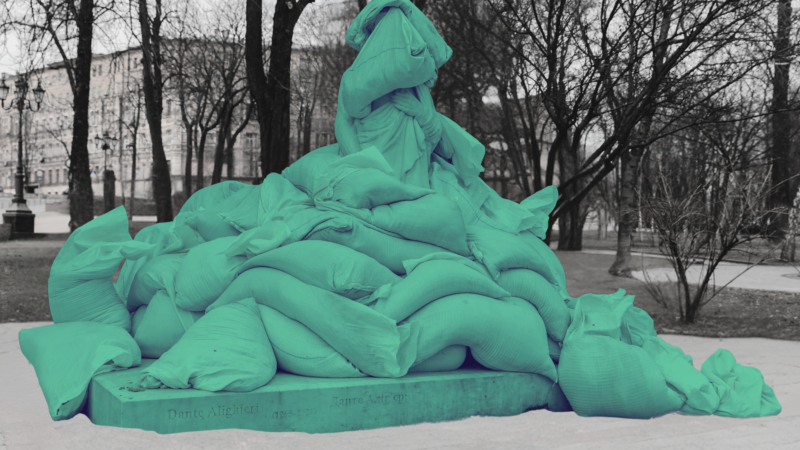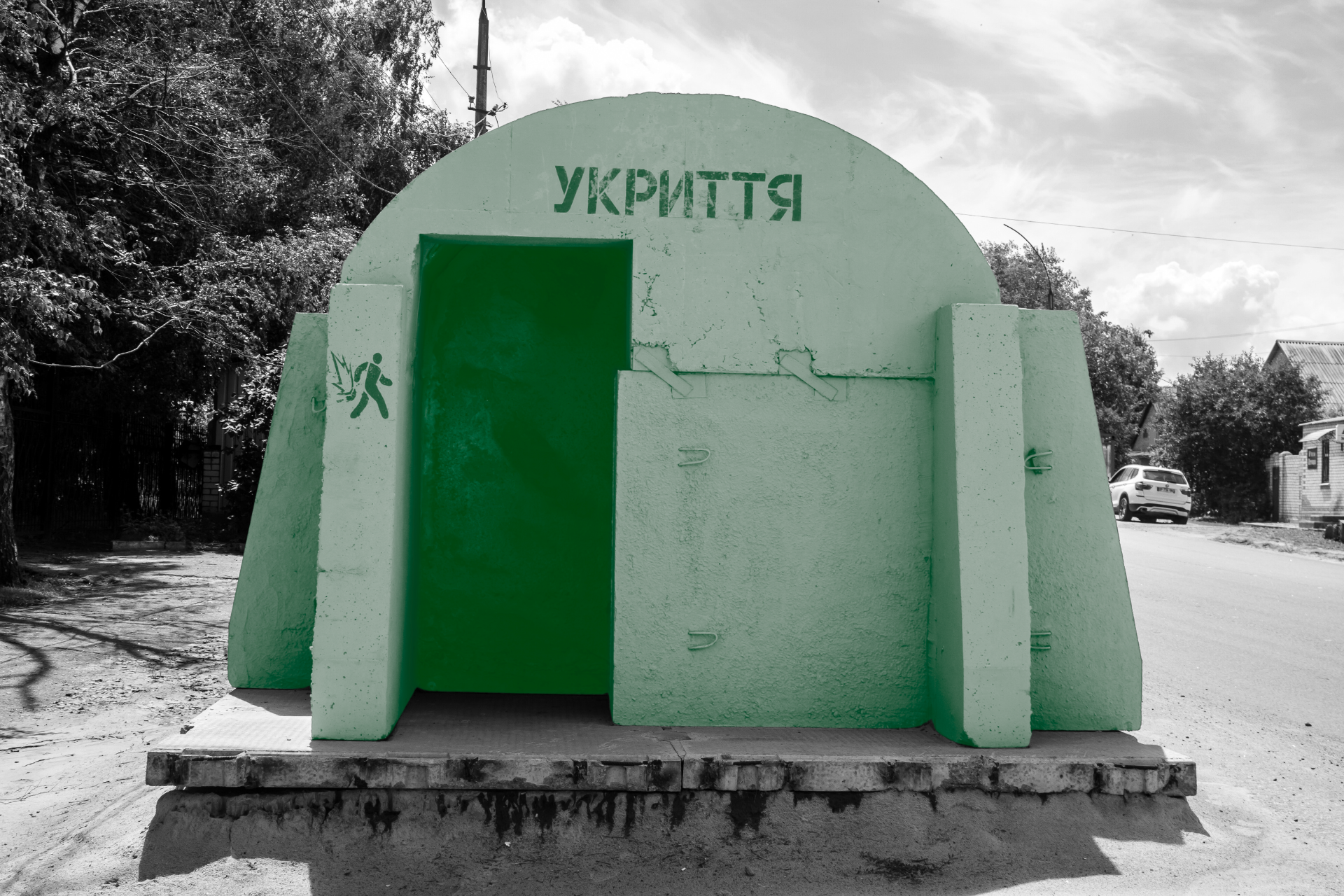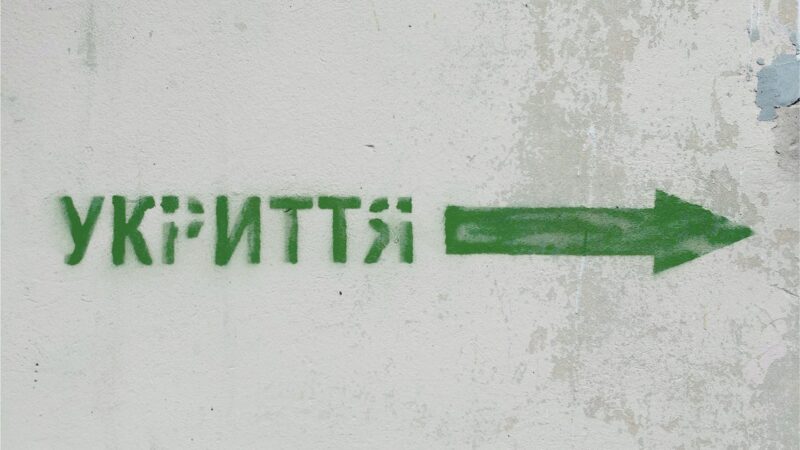Interview with Mariana Budjeryn | Commitments to Ukraine in Budapest Memorandum are legally binding

Oleksandr Pankieiev: How has Russia’s full-scale invasion of Ukraine changed your understanding and view of the international security order? What pitfalls do you see now?
Mariana Budjeryn: One of the things that we probably knew before but has now come particularly into focus since the Russian invasion of Ukraine is the inadequacy of the global power structures as they were founded, incorporated, and institutionalized after the Second World War. This inadequacy has been laid bare when one of the core states of the international system, a member of the UN Security Council with veto power, has gone rogue. Great powers like to cut corners and bend the rules. But Russia has set to dismantling all the rules. We are witnessing the flagrant violation of basically every norm of international relations regarding the use of force and the conduct of war. And this is after WW II in Europe when we said never again.
That normative veneer has not been robust enough to constrain a power like Russia. Some people have always been sceptical about the role of such international rules, and they’ve said, “Oh, you know, international norms work until they don’t.” There’s very little recourse to justice if powerful states decide to defy international norms. And in preventing something like this from happening—something like a full-scale invasion—we can’t allow ourselves to be overconfident. That is not to say that international rules and norms have no significance in international relations, but we must adjust our understanding of how they work, in order to be able to prevent conflict.
Pankieiev: Last year, you published a book, Inheriting the Bomb: The Collapse of the USSR and the Nuclear Disarmament of Ukraine. At the outset of the full-scale invasion, the Budapest Memorandum was often referred to. Please tell us about the memorandum in the context of Russia’s war against Ukraine.
Budjeryn: Most of the research for my book was done before the full-scale invasion. When it started, I rethought my conclusions and analysis in the book, evaluating to see whether they had changed with the benefit of hindsight. We know that the future is unpredictable, but the past is even more unpredictable than the future. We re-evaluate the past in the light of current developments. And I largely stand by the conclusions I made in the book.
Regarding the Budapest Memorandum, we must be conscious that historical events must be evaluated in their own context. We might see them differently now. But to be fair to the people involved and truly understand their role, reasons, and consequences, we must put them in the context they were in at that time.
The Budapest Memorandum on Security Assurances, which Ukraine negotiated and signed with the United States, the UK, and Russia in 1994, was part of the broader deal that led to Ukraine’s nuclear disarmament. There were also other components: compensation for the fissile material in the warheads and economic assistance. Ukrainian diplomats made concerted efforts to get the kind of robust security commitments that Ukrainian officials felt they needed in exchange for giving up this strategic asset. And what Ukraine was giving up then was not the third-largest nuclear arsenal or a fully-fledged nuclear deterrent. It was the nuclear option. Ukraine had a huge inheritance, but it did not amount to a nuclear deterrent that Ukraine was ready to put into service. Ukrainian officials made a concerted effort to get a fair deal for Ukraine, and we must give them their dues. It was challenging for Ukraine at that point to negotiate with two large nuclear powers, one of which, the United States, was the predominant political power in the world and the other one, Russia, while being rather weak in the early 90s, still held critical levers of influence over Ukraine—particularly energy supplies. Ukraine’s energy supplies came from Russia: gas, oil, and fuel for nuclear power plants, providing half of Ukraine’s energy mix. So there was enormous leverage on Russia’s side and very little leverage on the Ukrainian side. Unsurprisingly, Ukraine did not get everything it wanted from the Budapest Memorandum, but it did get something. The fact that Ukraine negotiated a separate document that accompanied its accession to the Nuclear Non-Proliferation Treaty (NPT) was unprecedented. No other country acceded to the NPT with this kind of set of written security commitments.
The significance of the Budapest Memorandum was not in pledging some robust security commitments that Ukraine would not formally have in accordance with the UN Charter or with the 1975 OSCE Helsinki Final Act: not to use or threaten force against sovereignty, independence, territorial integrity, and to respect internationally recognized borders. Countries pledge all these things to each other just by virtue of being members of the UN and signatories to the Helsinki Act. What was significant about the Budapest Memorandum was the timing and the form: it recognized Ukraine’s legitimate security concerns and linked security assurances pledged in the memorandum to its nuclear disarmament and accession to the NPT. The Budapest Memorandum is a part of the broader non-proliferation regime; it’s registered at the UN and attached to Ukraine’s act of accession to the NPT. It was signed by Ukraine and the three nuclear weapon states, the United States, the United Kingdom, and Russia, depository states of the NPT. And one of those signatories blatantly and brazenly breached its commitments pledged in the Budapest Memorandum—and more importantly, it breached the UN Charter. Thus, all the arguments that the Budapest Memorandum is not legally binding are moot. The commitments in the Budapest Memorandum are legally binding by other means like the UN Charter, and Russia is part of the UN.
The Budapest Memorandum has political and historical significance. As with any international political document, you have to make something out of it. There’s no automatic procedure. It doesn’t matter how legally binding it is on paper; you must work at it. After signing the Budapest Memorandum in 1994, Ukraine as an independent state didn’t leverage this document enough. Instead, it was something that Ukraine signed and put on the shelf. It said “guarantees” in Ukrainian translation, and that was good enough. It could have been more—a framework for military and defence cooperation with the signatories, whichever signatories Ukraine cared to pursue this cooperation with, likely the United States and the United Kingdom.
Before 2014, Ukraine was negotiating its identity and geopolitical course. Let’s remember that someone like Yanukovych was popularly elected as president of Ukraine. Due to its political ambivalence and the lack of a concerted Western grand strategy toward it, Ukraine always had this “instrumental” engagement from the West. Without a long-term, sustained, and concerted strategy toward it, Ukraine found itself in geopolitical limbo.
The Budapest framework failed to be developed into something that could have been filled with more concrete, consequential measures of defence and security cooperation. After [Russia invaded Ukraine’s Autonomous Republic of Crimea in February] 2014, the West—particularly the United States—should have taken the lead as one of the document’s signatories [and security guarantors, but it did not]. The Obama administration took a “leading from behind” approach in terms of Ukraine and did not react stringently enough to the occupation of Crimea [and the war in the Donbas]. It dismissed Russia as a regional power and treated everything as if it was somewhere in a faraway country in Eastern Europe—about which we know very little, and frankly, we don’t care, and we don’t want to do something escalatory. That is why Germany and France were allowed to pursue negotiations [on the Minsk agreements]. However, the right thing to do would have been for the United States and the UK, as signatories of the Budapest Memorandum, to negotiate instead of the Normandy format. Maybe then, the Budapest format would have negotiated a more substantive and fair framework than the Minsk agreements, which could not have been implemented without compromising Ukraine’s sovereignty.
In sum, the Budapest Memorandum was the best possible option under the circumstances in 1994. It undoubtedly could have been leveraged better—by Ukraine before 2014 and by the Western signatories after 2014. Today, its breach has very significant consequences for the credibility of the non-proliferation regime because it is a constitutive part of that broader non-proliferation architecture.
Pankieiev: At the outset of the full-scale invasion, Russia occupied the Chornobyl Nuclear Power Plant. The Zaporizhia Nuclear Power Plant is still occupied. What are the threats, and what are the possible solutions to prevent a nuclear catastrophe in Ukraine?
Budjeryn: One thing we can see from Russia’s way of prosecuting the war, is that it is willing to defy the rules which, at one point, it had a hand in making. As the [self-proclaimed] successor state of the USSR, Russia is a founding member of the International Atomic Energy Agency, an international organization charged with the responsible development of civilian nuclear power and ensuring that civilian nuclear energy is not diverted to military applications. Now Russia has made the most blatant and almost unbelievable violations of these rules; using military force against civilian nuclear facilities is prohibited by international law and conventions of the IAEA, where Russia is a member of the Board of Governors.
Russia[’s invading armies] occupied the Chornobyl NPP, which was decommissioned in 2000. But it remains a repository of a massive amount of radioactive material that needs special regimes and security procedures, requiring qualified personnel to attend to it. The negligence and ignorance of the Russian troops that occupied Chornobyl is mind-boggling: we know the reports of the Russians digging trenches in the Red Forest—one of the most contaminated places in the world—and the harm done to the Russian soldiers themselves.
But Russia’s occupation of an operating power plant, the Zaporizhia NPP—the largest in Europe, with six reactors loaded with tons of hot, really active nuclear fuel—is an entirely new order of magnitude. And again, the Russian military forces have conducted themselves in brazen violation of any rules of war and nuclear safety and security protocols that apply to civilian nuclear facilities.
For instance, on March 4, 2022, when they were taking over the ZNPP, protected by only 200 men of the lightly armed National Guard of Ukraine regiment, the Russians shelled the power plant. They hit the training building and the building adjacent to the first reactor! There was no reason to shell and open fire from the tanks; there was nothing to hit [of strategic military value].
It was either a policy of intimidation or perhaps other things that they wanted to get through this assault that didn’t have any military rationale. The ensuing terror against Ukrainian staff once the Russians occupied the ZNPP is a qualitatively new story in the world of international security. We’ve always paid attention to threats to buildings and nuclear materials. The reactor’s core has to be protected by a containment chamber, and you have to do everything to secure it from perhaps one or two bad people, earthquakes, or other things. But we never thought of how to secure a nuclear reactor from regular military forces of a hostile state power.
In any case, the people themselves, highly qualified nuclear engineers, are irreplaceable. It takes decades to train those people around a particular facility. They are not just any nuclear engineers; they are those who know how to operate this particular reactor—and these people became hostages. This is an unprecedented threat to nuclear security, because even if you can ensure that electricity and water keep flowing through the reactor’s cooling systems, you still need experienced people to operate it. We would be in a major disaster if Russia removed all of these people from the plant.
We haven’t made provisions for how to protect these people. Terrible stories are coming out of Zaporizhia. People who are suspected of passing information to Ukrainian Security Services—or being veterans of the ATO (war in the Donbas) or having a strong pro-Ukrainian position or refusing to sign a contract with Rosatom—are being taken to underground premises and tortured.
Pankieiev: One of the reasons why Western countries have been hesitant to provide advanced weaponry to Ukraine to defend itself is because they are afraid that Russia can resort to a nuclear strike. What is your opinion about those fears? To what extent are they real—or is Moscow bluffing, considering what we have been observing for over a year and a half of the war?
Budjeryn: One thing that could be observed is that there hasn’t been a nuclear use in Ukraine. There is a combination of reasons why it did not happen. There has been caution on the part of Western governments, particularly the United States, in how the aid is provided. For instance, aiming to prevent escalation, Ukraine is prohibited from using Western systems on Russian territory. These delays and limitations have cost lives, not just in the Ukrainian armed forces but also among the civilians. It could have cost Ukraine this counteroffensive. But it might have influenced the Russian calculus. The aid is relatively incremental—not one significant floodgate that would create the context for some drastic response. And the drastic response might be nuclear.
Another reason why Russia might not have used nuclear weapons in Ukraine was simply the difficulty of achieving its political goals with nuclear means. It has long been said that nuclear weapons are good for deterrence: they’re suitable for threatening retaliation, dissuading the adversary from striking first—that’s the primary use these days of nuclear weapons. However, as war-fighting implements to achieve political ends, nuclear weapons are of little help.
There are three scenarios of how Russia could use nuclear weapons in Ukraine. The first is a demonstration over the Black Sea or Arctic, but there are very important reasons against it. It would show that you’re refraining from using these weapons seriously. There is also a chance that nobody’s impressed; maybe all you do is encounter negative fallout from breaking that taboo against nuclear explosions, and you’ve achieved nothing.
The second scenario is battlefield use along the front line. Both NATO and the Soviet Union, back in the ’60s, had operational plans for it. It was nothing but a numbers game and logistics. The longer your logistics lines stretch to the battlefield, the harder it is to deliver thousands of conventional artillery shells to continue barrages against enemy fortified positions. Or, as the option, a handful of tactical nuclear weapons to achieve the same goals. Militaries usually hate that scenario because it complicates the battlefield and hampers the prosecution of conventional operations. They have to have special gear and training to operate in a theatre affected by nuclear use. It’s not so easy.
Unfortunately, the third one—which most likely would have been the most effective—is the use of nuclear weapons against a city. Putin’s mention of Hiroshima and Nagasaki in his September speech a year ago (in connection with the annexation [of illegally occupied territories]) was not without a reason. The precedent of Hiroshima and Nagasaki was a nuclear weapons state using nuclear weapons against a non–nuclear weapons state to induce its unconditional surrender. The way the United States did it, they staggered it. They hit one city, Hiroshima, and announced that more is coming if you do not surrender. Then came the second one, Nagasaki. That’s a scenario where I think—at a critical moment, already stressed by war in a significant way—Russia would cross that line and would use a nuclear weapon against a Ukrainian city.
It might be a mid-sized city—Vinnytsia or Odesa, for instance—and then they would say that Kyiv is next if Ukraine does not surrender. And that would be a tough decision for the Ukrainian leader and the Ukrainian people. I cannot quote the source, but I have it on good authority that about a year ago, at the end of September or early October, US intelligence assessed that the chance of Russia using a nuclear weapon in Ukraine was about 50%—that’s a flip of a coin…that’s probably the highest probability of intentional nuclear use that history has known.
That is not to say that, you know, nuclear use is inevitable. It is not to say that Ukraine should stop fighting or the West should stop supporting Ukraine; quite the opposite. It is necessary to take these threats seriously and consider what to do in order to prevent Russia from crossing that threshold. Whatever was communicated to Russia a year ago—whether by the United States or by China or India, or all of the above—seems to have worked to dissuade Russia from using nuclear weapons. But we cannot be entirely complacent that that would last indefinitely. What we see now is that Russia is ramping up the manufacture of conventional missiles and shells. This is a sign that Russia intends to continue waging a conventional war.
Pankieiev: How do you see the war unfolding in the near future? What scenarios do you see for its end, and what order might be established afterward?
Budjeryn: By now it is obvious that Russia did not achieve a quick and glorious territorial conquest. The war is turning into a long and arduous slog. We know from the history of warfare that wars are either short, and there are very few of those, or else protracted over multiple years. And there’s very little in the middle.
It’s apparent that Ukraine and Russia are in a long war now. We won’t see the Kharkiv counteroffensive or the Kherson retreat again. Those were exceptions rather than rules. So whatever happens now is unforeseeable. There will be a continuation of conventional operations on both sides with varying intensity. There could be internal destabilization in Russia, although it would be imprudent to count on that for the termination of the war. There could be some other things that occur in the occupied territories. It could be the butterfly effect—something small that triggers a cascade on the Russian side.
Barring that, we’ve reached a stalemate on the battlefield, where neither side can push through. We had a very good article from General Valeriy Zaluzhny in The Economist, who observed that with the means that Ukraine has, it has reached the limit of what it can achieve on the battlefield. If there’s some miraculous package of armaments from the West that comes at the right time and the right combination of things, I think Ukraine might have the potential for another counteroffensive next spring. Depending on what that achieves, then by about 2025, the parties might have to sit down. And again, it will not be predicated by pressure from the outside; it would be Ukraine’s decision. Ukrainians are bearing a very high cost, and the leadership supported by the people might decide that they cannot keep pouring costs into this, mainly lives. Then, at that point, the critical question for Ukraine’s Western partners will be not just reaching an armistice and ceasefire but how to redraw European security architecture that includes Ukraine and protects it in such a way as to prevent another round of escalation from happening again in the foreseeable future—prevent Russia from rearming, recovering from this, and re-launching another invasion.
The “permissive factor” of the war was that Ukraine was in a security vacuum; it was not part of NATO, it was not protected by any deterrent, conventional or nuclear—not its own nor one extended by an ally. Ukraine’s military has only just begun recovering from decades of looting and neglect, so Russian perception was that Ukraine would be easy prey. But it proved to be stronger than anyone expected, certainly stronger than Mr. Putin had expected. However, the perception of Ukrainian weakness was conducive to his decision to invade. How do you ensure that he is disabused from that notion ever again? The West has to be humble about what it can do about Russia, other than containing it. But the West can do a lot with Ukraine, which is willing and able to be integrated into Euro-Atlantic political and security structures.
We must assume that Russia will be there for a very long time and that its regime will remain the same and have the same political aims. It’s up to them to change it, and we have minimal impact on it—“we” meaning the Ukrainians, the West, and everybody else. Given that Russia is going to continue to be that kind of Russia, what is it that you do with Ukraine—and also with Georgia, Armenia, or Moldova? How do we fill that vacuum, and with what type of instruments of power can we dissuade Russia and prevent it from waging war again?
Once the security part is settled, it will be easier to encourage investment in Ukraine for economic reconstruction. Because without that security component, without ensuring that the plant that you’re going to build today is not going to be destroyed by a Russian missile tomorrow, nobody’s going to invest in Ukraine. You can freeze the front, but Russia would still have the missiles. It can hit Ukraine over the front. How you prevent that will be a crucial question upon which the rebuilding of the economy and critical infrastructure will hinge. And after, Ukraine can continue to battle its own demons to develop an open, democratic, and well-governed state. Nobody has cancelled the dysfunctions that Ukraine has acquired over the past 30 years. They also proved to be a “permissive factor” for Putin. So there’s still a lot of work to be done on the political front—with which EU accession will help. But a firm security foundation is the real key to Ukraine’s future.





